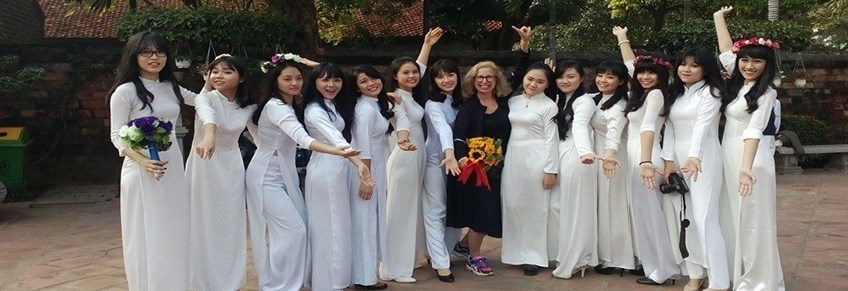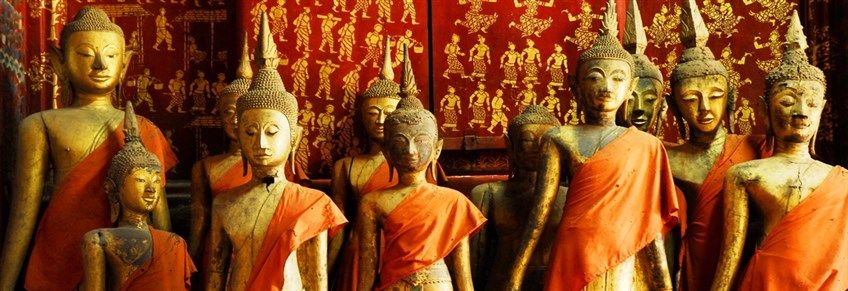
Most nations have their own unique way of dress and Myanmar is no different. Myanmar has a traditional dress style that is easily recognised and associated with this country. But, Myanmar is a country with plenty of ethnic minorities which means the local costume varies from one region to the next – though there is one item: the longyi that is major part of the local dress and certain to be noticed on the Myanmar private tour. The longyi is a simply a piece cloth that is tied around the waist and has formed a standard part of the country’s dress for hundreds of years.
Longyi
The longyi has since the 19th century been a traditional piece of clothing for the local people in Myanmar. This article of clothing is much like a sarong with several pieces of rectangular printed material sewn to create a tube shape.
The style of the longyi means it is a practical item of clothing for both men and women. The everyday version of the longyi comes in a cool cotton material, while a silk version is favoured for the special occasion or event.
The longyi can vary slightly with the different versions for the men and women. The longyi worn by a man is referred to as a pasoe, while the woman’s copy is known as an htamein. The major difference in the costume relates to the method of wearing and its pattern. For instance, the longyi worn by men has a knot tied at the front, while this is located at the side for women.
The colour scheme for the men’s costume is stripes or checks with light hues, while the women’s is more distinctive with abstract patterns, flowers, stars and finished in bright colours. Also, for the top half of the body, the men make use of a western-style shirt and women use a matching top or blouse.
However the 135 ethnic groups in the country can lead to further differences in this traditional costume. Each of the main ethnic groups (Shan, Rakhine, Chin, Kayin, Kayah, Kachin, etc.) has variations in relation to its costumes, traditions, folklore and dialect. This also means that each of the groups has created their own unique style of longyi.
For instance, the Kayin men prefer a style of longyi that includes central horizontal stripes, while the Chin women favour a style of longyi that includes a floral design. A longyi with horizontal stripes is worn by Rakhine women and the Kayah people prefer their costume in black or red and a great sight to see on the Myanmar holidays.
More and more of the local people are starting to wear western styled t-shirts and blouses, yet still wear these items in combination with the longyi. While a lot of experimentation has taken place with new styles and fashions, the longyi has traditionally been kept as the preferred item of clothing.
Rather than abandon the longyi for the western styles, the style and fashion of the western clothing have been used to influence the look of the modern longyi. While the pattern and cut stays relatively unchanged, there is a certain degree of modification to the length to having a zip at the back or a slit at the side.
The longyi is a popular gift or souvenir item for the tourists on the Myanmar family tour and available to buy at most street markets or outside major attractions, such as the Shwedagon Pagoda.
Costume in different races
With 135 distinct ethnic groups across the country, the style of the clothing in Myanmar can vary from region to region.

Kachin
The traditional clothing of the Kachin men consists of sarong-like longyis or slacks, jackets and shirts. Plus, a headdress or turban can be worn with tassels. Most of the local women create hand-woven clothes that include chequered and flowery designs. An item of clothing like the blouse is often finished with silver studs or coins.
Bamar
The Bamar men favour a costume of a traditional jacket, shirt without collars, and longyis. Other items include a ready-made turban. Bamar women dress in blouses with an opening front (buttons are central or on the side) and longyis. Also, a lace shawl is draped over the shoulders and hair is worn in topknots.
Mon
The customary wear of the Mon men is a traditional jacket, shirt without a collar, and red chequered longyis. Mon women prefer the open-fronted blouses and longyis with hair that is wrapped around a comb.
Kayah
The Kayah men wear a traditional jacket and shirt with trousers at a length that is just past the knees, and a white headdress. Also, for the traditional occasions the men can include stringed silver swords and silver daggers. For the women, many have their hair styled in high knots and include a red headdress. A red cloak is often worn over a sleeveless blouse, and also wears the black or red coloured longyis.
Rakhine
The Rakhine men wear a costume consisting of traditional jackets, shirts without collars and skillfully woven longyis. Other items include the ready-made turban with the left facing wing-cloth. Rakhine women are seen in longyis with horizontal stripes or similar beautiful designs; a shawl is wrapped across the body, and their hair in several different styles.
Chin
The Chin men make use of trousers and shirts that may be accompanied with a colourful blanket for festivals or similar special events. The traditional headdress is styled with a vertical black stripe. Chin women favoured a style of longyis that is richly decorated with flower designs, diamonds, or horizontal stripes, and at a length that just covers the ankles. The wrists are seen to include a broad band of wires in bronze or silver. Plus, for the special events, they can also include a gorgeous silk blanket.
Kayin
The Kayin men wear tunics (jacket-type or pullover-type), shirts, longyis and trousers, as well as a headdress with loose tassels hanging on the right side. Most of the longyis are styled with horizontal stripes. For the women, the preferred dress is longyis with a long tunic and headband with each of the ends hanging at the front.
Shan
The Shan men wear traditional khaki jackets, shirts and baggy trousers made of a material like khaki. Plus, the men also wear a headdress, while women favour blouses and longyis.











